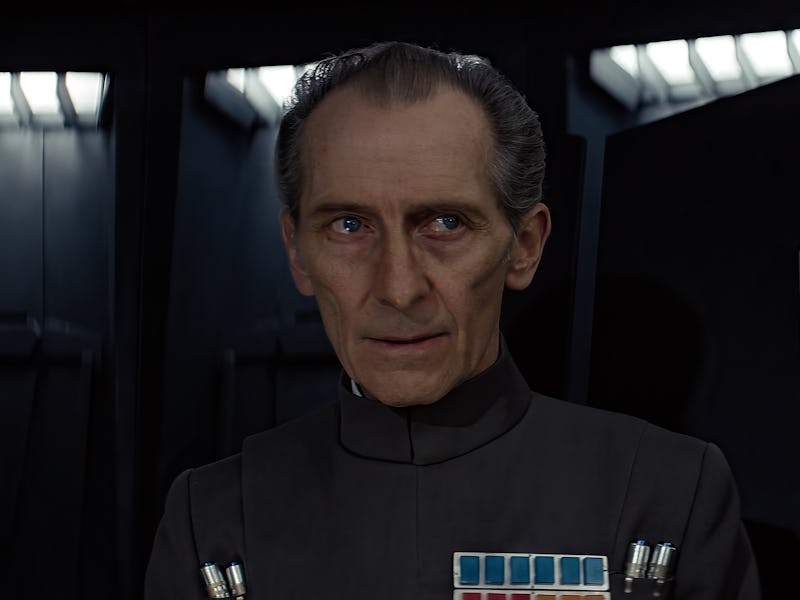An Infamous Star Wars Scene Just Sparked a New Disney Controversy
Rogue One is going to court.

Rogue One was a revolutionary Star Wars movie for several reasons. It proved Star Wars could succeed at the box office beyond the flagship saga, it fleshed out a crucial part of the timeline leading up to A New Hope and, although no one knew it at the time, it led to the creation of Andor, the best Star Wars show on Disney+.
But another of its cutting-edge decisions is still fuelling debate today, and now Disney could face serious consequences.
How Disney Added Peter Cushing to Rogue One
Rogue One was set right before the first Star Wars movie but came out 39 years later, so any actors who appeared in both needed to be digitally de-aged to fit the timeline. Carrie Fisher, who played Princess Leia, agreed to have her body subjected to the relevant CGI, but Rogue One faced a challenge when it came to replicating and de-aging Peter Cushing, who played the villain Grand Moff Tarkin but passed in 1994.
Rogue One’s version of Peter Cushing was lifelike — but was it legal?
Industrial Light and Magic, the special effects company founded by George Lucas, utilized stand-in actor Guy Henry to film Tarkin’s lines, but needed to map Cushing’s face onto the digital model. With the actual person involved no longer available, ILM had to turn to unconventional means.
In 1984, only a few years after A New Hope, Cushing appeared in a single scene of the spy parody movie Top Secret! His role involved a visual gag requiring an enlarged eye prosthetic, meaning Cushing had to sit for a mold of his face. Decades later, ILM was able to obtain a copy of that cast and scan it, making a digital copy of the actor without his involvement.
Why Disney Is In Trouble Now
This technique raised serious questions; is it ethical to re-create an actor with technology if the actor is deceased and thus can no longer consent to the process? Critics and fans debated the issue, and now it’s being brought to court.
Peter Cushing’s appearance as a bookkeeper in the silly Top Secret! made his Rogue One appearance possible.
According to Euronews, film producer Kevin Francis and his company Tyburn Film Productions are suing Lunak Heavy Industries, a Disney subsidiary that worked on Rogue One, over the Cushing appearance. According to Francis, his company made a deal with Cushing for a TV movie the year before his demise that did not allow for appearances without Francis’ — Not Cushing’s — permission.
Disney, on the other hand, argues that the terms from Cushing’s original 1977 New Hope contract cover Rogue One as well, and that it did moral due diligence as well by getting permission from Cushing’s estate and paying for the use of the image. The executors of Cushing’s estate are now themselves deceased, which may explain the timing of Francis’ suit.
While this may be a question of which contract takes precedent rather than a legal issue that settles the use of posthumous CGI once and for all, such issues will only become more common as digital de-aging becomes easier. Disney may have done the right thing in seeking estate permission, but it still faced criticism for the very concept. That criticism could only grow more powerful, regardless of how this suit ends.